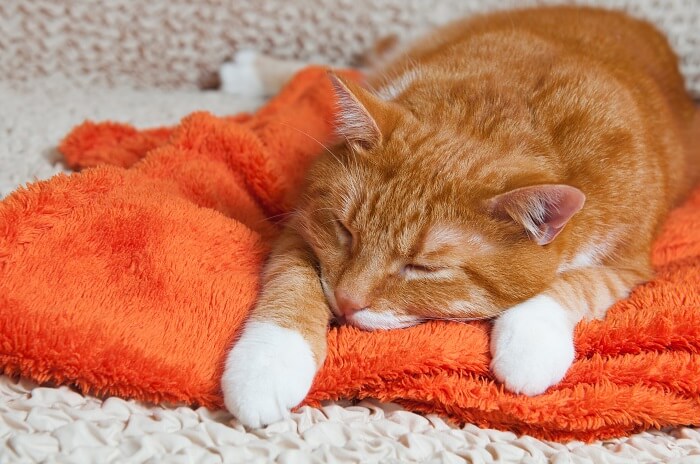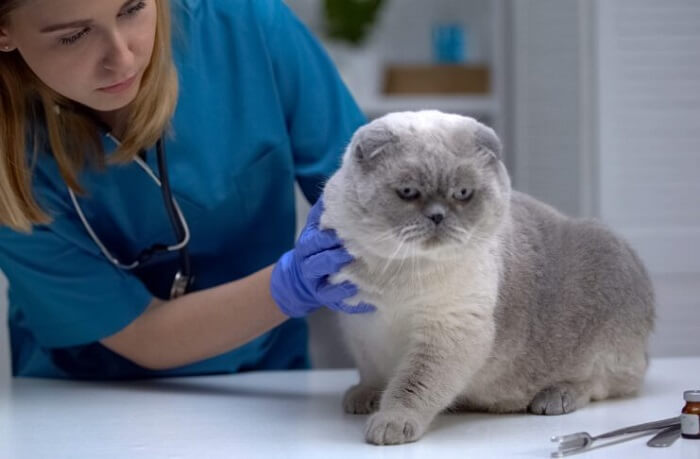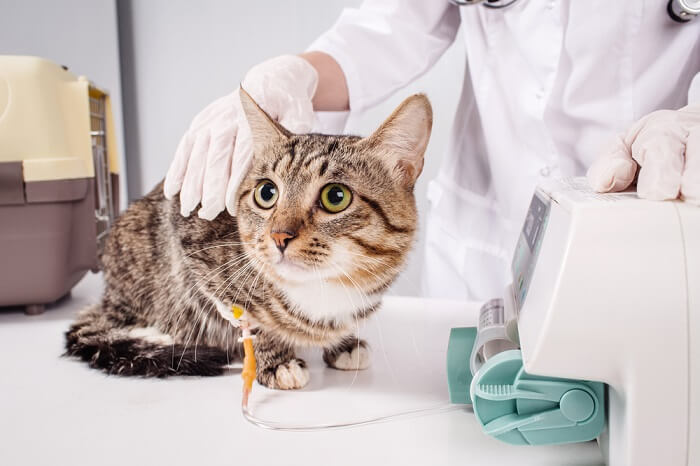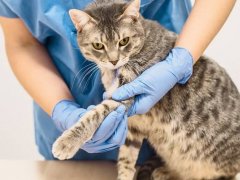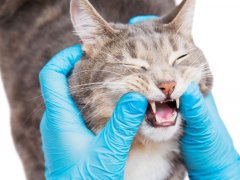The aim of this article is to provide a good quality, accurate, easily understandable summary of the details about lead poisoning, with a particular focus on the risk to cats.
Quick Overview: Lead Poisoning In Cats






About Lead Poisoning in Cats
Lead poisoning is rare in cats (it’s ten to thirty times more common in dogs), partly because cats tend to be finicky eaters, so they are less likely to ingest lead compared to dogs. In up to 90% of cases, when lead poisoning is diagnosed, the source of the lead remains a mystery.
That said, there are specific situations where sources of lead may be identified.
- Ingestion of lead-containing paint chips or lead paint dust (e.g. during the renovation of old houses: lead-containing paint was banned in most places in the 1970s).
- Ingestion of small lead objects in prey (e.g. such as angling sinkers in fish, or lead shot in prey animals like rabbits)
- Areas with high lead levels in the environment, including the soil and water (e.g. near industrial complexes like smelters)#
- Other possible sources of lead include lead solder, car batteries, lead window putty, old golf balls, and some types of old linoleum. Exposure to these in some way can be linked to lead toxicity.
Symptoms of Lead Poisoning in Cats
Non-specific clinical signs such as abdominal pain, dullness, and inappetence/ anorexia, as well as gastrointestinal signs (e.g. vomiting or constipation), and weight loss, are most commonly seen.
Other symptoms include signs linked to the nervous system (seizures, ataxia, and behavior changes such as excitability and aggression, as well as blindness, head pressing, and circling). Rarer signs include megaesophagus, linked to regurgitation.
Diagnosis of Lead Poisoning in Cats
The signs of lead poisoning in cats will often be non-specific.
Sometimes, there may be a history of known lead exposure (e.g. renovation of an old house) where the hazard has been identified. More often, the signs will be non-specific, and the veterinarian will carry out an investigation to make the diagnosis.
Detailed History Taking
Your DVM veterinarian will discuss every aspect of your cat’s life, looking for clues that may include possible exposure to a source of lead. Young animals and small animals may be more prone to lead poisoning than older, larger cats.
Physical Examination
Your veterinarian will check your cat over carefully, ruling out other causes of the signs that are being shown. A detailed neurological examination will be carried out.
Routine Blood Tests and Other Laboratory Work
Your veterinarian may suggest blood tests, including the usual panel of diagnostic tests, such as hematology (complete blood count) and biochemistry profiles, to confirm that there is no other underlying illness affecting your cat.
Abnormalities caused by lead poisoning include anemia, abnormal red blood cells, and sometimes other changes in hematology. Elevated liver enzymes are sometimes seen, and there may be a pattern of other biochemical changes, such as elevations of urea, creatinine, glucose, and cholesterol.
Urinalysis may also be carried out, with some cats having urine that is more diluted than normal (hyposthenuria).
Radiography
If a cat has ingested lead (e.g. in prey) then evidence may be seen in the form of lead in the gastrointestinal tract on x-rays.
Specific Tests To Measure Lead Levels
A definitive diagnosis of lead poisoning requires the measurement of the lead levels in a blood sample, measuring blood lead concentrations in parts per million (ppm). Lead urine levels may also be found to be elevated, and rarely, levels of lead in the tissues may be reviewed.
Treatment of Lead Poisoning in Cats
The priority initially is to stabilise any signs of lead poisoning, alongside the anti-emetic treatment and any specific treatment to remove lead from the body.
The priority initially is to stabilise any signs of lead poisoning (e.g. anti-seizure medication including diazepam for a cat that is having seizures). Anti-emetic treatment should be given to stop vomiting, and intravenous fluids may be administered as general support.
Specific treatment to remove lead from the body is often also carried out, with the details depending on the suspected cause.
- If there is lead dust or flakes in the cat’s coat, then the cat may be washed to remove these and to prevent further ingestion by self-grooming.
- If there is lead in the digestive tract, this may be removed by methods inducing vomiting, gastric lavage, laxatives, or by performing enemas.
- If there is lead in the tissues (e.g. lead shot pellets) these may be surgically removed.
Chelation Therapy
If the source of the lead is removed, and blood levels are not falling, so-called chelation therapy may be attempted. This is a chemical process when a chelating agent is introduced orally, rectally, or by injection with the aim of removing metals from the body.
Different products are used:
- Calcium EDTA – by subcutaneous or intravenous injection
- Succimer or penicillamine – given orally
Prognosis
The prognosis depends on the severity of the signs, and the level of lead exposure.
Regular monitoring of blood lead levels may be recommended, and chelation therapy may need to be repeated intermittently for weeks or even months.
Prevention of Lead Poisoning in Cat
If cats live in an old house (pre-1970’s), they should be excluded from areas that are being renovated. Cats should not be knowingly exposed to lead sources (e.g. do not let kittens play with lead fishing weights).
Conclusion
Lead poisoning is a specific diagnosis linked to exposure to lead. A toxicology workup is needed to make this diagnosis, and once the problem has been identified, specific treatment can be given.
Frequently Asked Questions
What are the symptoms of lead poisoning in cats?
The signs are often non specific, but neurological signs including blindness and seizures are typical.
Can cats die from lead?
In severe cases of lead poisoning, death is possible, but chelation therapy is successful in over 70% of cases.
How long does it take to get lead poisoning?
Exposure to high levels of lead can cause rapid signs of toxicity, but this tends to be linked more to long term exposure.
How does lead affect pets?
Lead affects the chemistry of the blood, nervous system and the blood cells, leading to specific signs of poisoning.
Are humans at risk from lead poisoning?
If a cat is diagnosed with lead poisoning, humans sharing the same environment should discuss the issue with their medical doctors, especially in cases involving pregnancy or young children.
